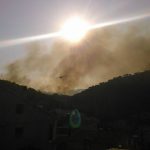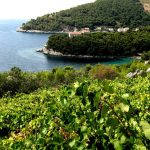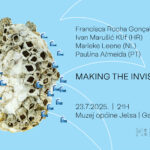Experts say no one is investigating these stains, Ministry states it actively monitors our sea
Oil stains sized between 100 metres and 108 square kilometers can be seen on satellite images of the Adriatic Sea. Russian – Croatian team of experts analysed over 60 satellite images taken between 2003 and 2011 and the largest stains were located on the border of the Croatian and Italian part of the Adriatic while a significant amount can be seen within the Ecological and Fisheries Protection Zone (ZERP), HINA reports on February 21, 2016.
The largest number of worrying oil stains can be seen along the regular international ship routes from the North-West to the South-East, says the leading author of the text Mira Morović, physicist from the Institute of Oceanography and Fisheries in Split. The second area with the largest number of stains is along the Italian border followed by the stains along local ferry lines connecting Croatian coastal towns and islands.
Experts believe they were caused by large ships transporting liquids of varied toxicity, including crude oil and oil products. They all occurred during the night because they were discovered on images taken in the morning and most likely occurred because ships tanks were being washed with various liquids with emulsifiers and surfactants which can create a thin layer of active agents on the surface of the sea.
Largest stains that are located on the border between the Croatian and Italian part of the Adriatic Sea do not necessarily represent crude oil pollution and they may be in accordance with the MARPOL convention, experts have noted.
Medium size stains can appear after ballast waters are discharged or the could be the waste waters from the engine or tanks, says Mira Morović adding that it was impossible to get any information from the Port Authority about any possible cases of illegal activities. She also notes that these satellite images have warned us about stains and pollution Croatian institutions know nothing about nor are they doing anything to resolve the problem. Satellite images have also shown that our current research is lacking and requires additional explanations.
We still don’t know which ships caused these stains or which oil substances were released therefore we should conduct new research activities along the two routes with the highest number of stains. Even though we don’t know yet who is responsible, it would be stupid to close our eyes and pretend it is none of our business, Morović adds.
Ministry of Maritime Affairs, Transport and Infrastructure stated that their governing body received 214 possible pollution warnings between 2008 and 2015 out of which 36 were investigated, 10 were confirmed and only one required cleanup activities. Croatia is using all the possibilities given by the European Maritime Safety Agency, including the use of the motor vessel “Marisa N” stationed in Trieste, Italy and the “CleanSeaNet” satellite surveillance system. Croatia has 48 vessels within the Ministry of Maritime Affairs, Transport and Infrastructure and air units from both the Ministry of Interior and Ministry of Defense. Whenever necessary, they also include eco units and tugboats as well as other privately owned vessels and planes.
Eco-activists don’t seem to agree with the Ministry. Head of the Eco Kvarner environmental group Vjeran Piršić states that scientific circles and eco groups have been aware of these non-incident pollution problems for years and that it is not as innocuous as most would have us believe since some of these oil stains can be three times the size of island Krk or Cres. Furthermore, Pišrić believes Croatia does not have the proper regulatory solutions for this problem because our ZERP was never fully implemented, not to mention that our monitoring service is not developed enough to tell us which vessel is responsible for the pollution.
In an event of an ecological incident we have all the procedures on paper but in reality, they don’t really function well, Piršić adds while Mira Morović says authorities never showed up to their lectures and workshops covering the subject of oil stains and pollution, even though they were invited so she concludes they believe this is not their responsibility.
State of our marine environment is good, especially when we compare it to other countries, and that is the result of a whole range of implemented measures, the most important one being the completion of sewage systems in larger cities, says Grozdan Kušpilić from IZOR (Institute of Oceanography and Fisheries).
A physicist from the Ruđer Bošković Institute and one of the instigators of ZERP Tonči Tadić says that these satellite images have been a known fact since 2004 and they have enticed Italy to activate an eco component of its Maritime protection zone in 2006 while Croatia remained silent. According to Tadić, new images are proving Croatia is wrong and the ecological component of our ZERP must be implemented as soon as possible.










